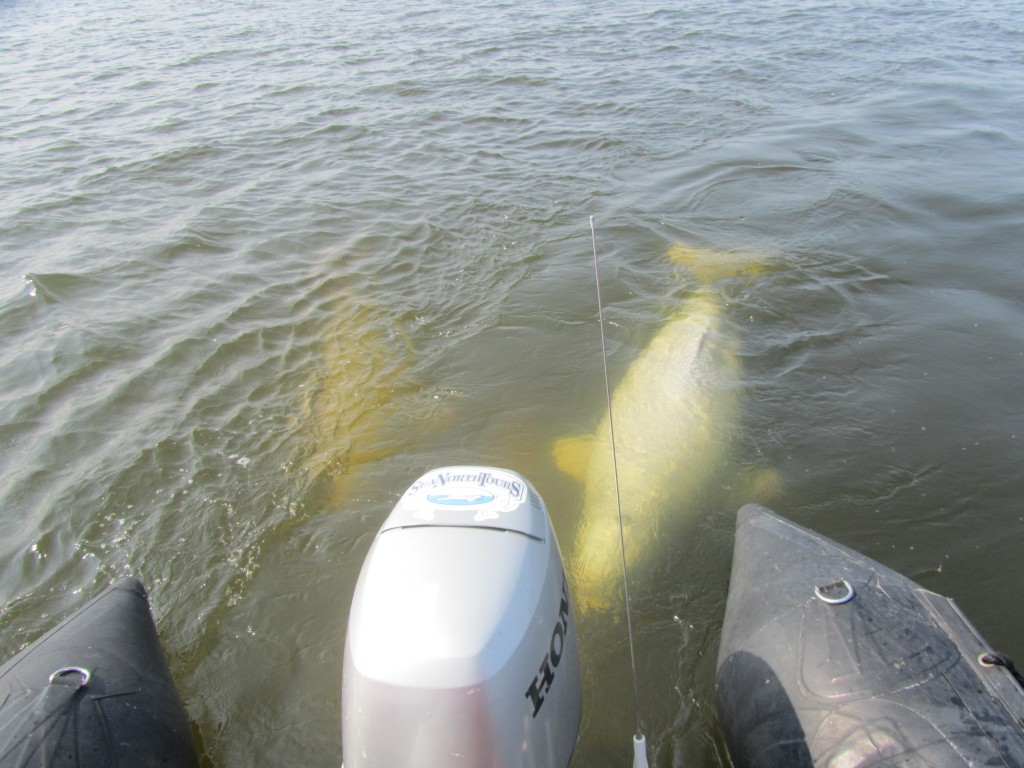Beluga Whales Communicate
I still remember the most amazing and intriguing sounds of Churchill’s Arctic summer were the sounds captured from the hydrophone we would drop into the Churchill River when out on the water with the beluga whales. Those clicks, shrieks and shrills coming from the depths of the chilly water mesmerized travelers and myself often for hours. Belugas are in fact nicknamed the “canaries of the sea” because of the incredible cacophony of sounds they produce.

Belugas at the back of the zodiac. Stephanie Fernandez photo.
These sounds are the mammal’s main form of communication and a key to their survival. At least half of the year belugas are navigating in the dark…quite literally. Under the sea ice in dark waters far north, these whales rely on sound from echolocation off the ice as well as communicating with each other. Sound without sight is their world a good part of their lives.
Biologists have begun to decipher the complex system of communication placing behavioral actions to the different and quite distinct clinks and squeals. hydrophones with recording ability are helping extensive research away from the beluga’s natural habitat in the Arctic.
However communication isn’t the only reason for belugas emitting sound through their nasal sacs near their blowhole. They have no vocal chords.These whales also use rapid strings of clicks to echolocate surfaces and food in their environment. The clicks bounce back to them and absorbed in their bulbous melons of their foreheads to form shapes and identify the prey. They also can wiggle the melon somewhat in order to specifically aim these sounds in different directions. Their unique ability to interpret returning sound wave lengths works just like our eyes work for humans.

Beluga whales echolocate using the melon on their foreheads. Steve Selden photo.
Evidence that beluga communication develops when calves are born stems from the evidence that a community of whales acting as sisters, aunts, cousins and grandmothers care for the calves as “allmothers”. They even produce milk when babies from other mothers are born regardless if they have a nursing calf or not. This early exposure to a language sets the base for more to come as the calves develop and interact with the pod.
Controlling the human – made noise in waters inhabited by belugas is of paramount importance to preserve their language and ability to communicate.

